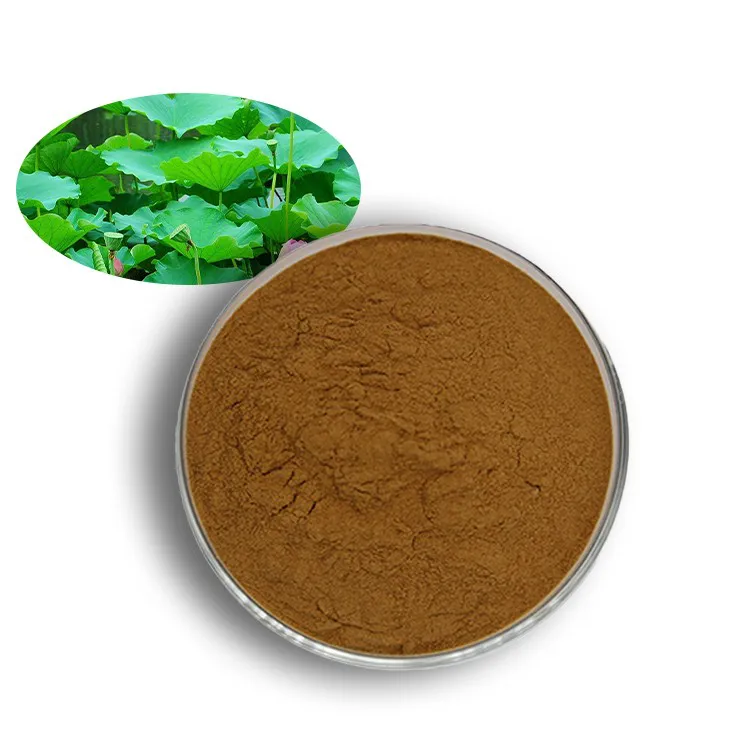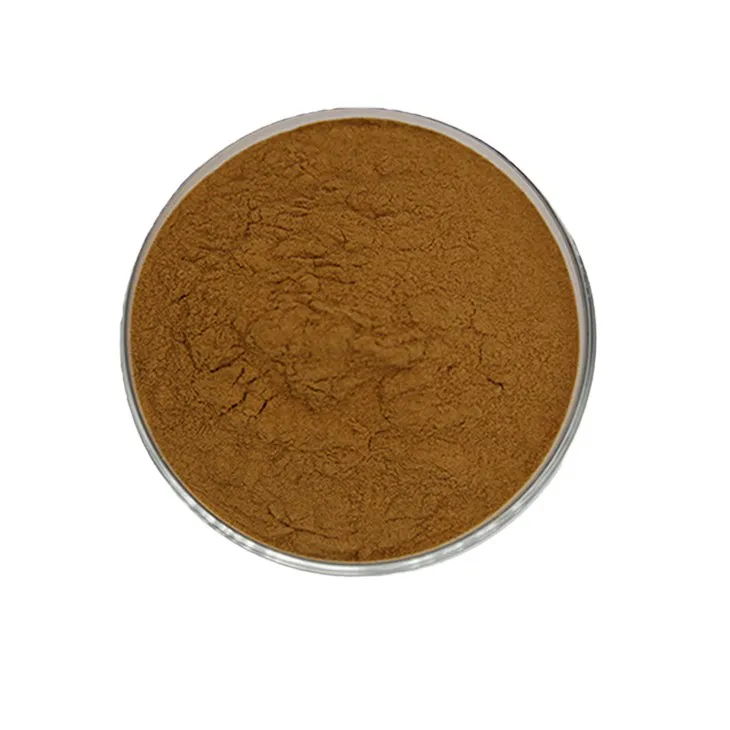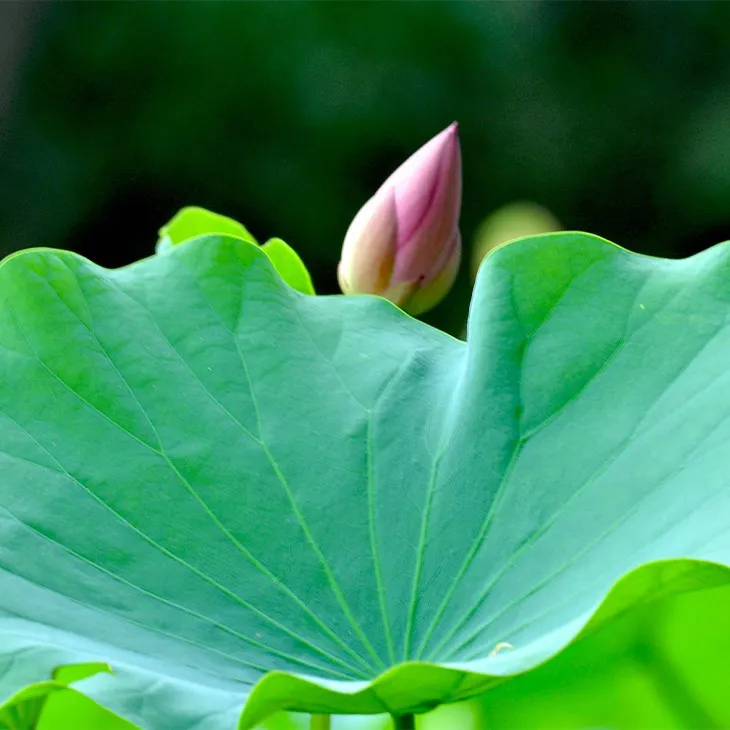- 0086-571-85302990
- sales@greenskybio.com
The Best Types of Lotus Leaf Extract: A Guide to Selecting the Best Lotus Leaf Extract
2024-11-13

1. Introduction
Lotus leaf extract has gained significant popularity in recent years due to its potential health benefits. It is used in various industries, including the food, pharmaceutical, and cosmetic industries. However, with the increasing number of products available in the market, it can be challenging to select the best type of Lotus leaf extract. This article aims to provide a comprehensive guide on how to choose the highest - quality Lotus leaf extract by considering factors such as purity, origin, and chemical composition.

2. Purity of Lotus Leaf Extract
Purity is one of the most crucial factors when selecting lotus leaf extract. High - purity extracts are more likely to be effective and free from contaminants.
2.1 Testing for Purity
One way to determine the purity of lotus leaf extract is through laboratory testing. Reputable manufacturers often conduct tests such as high - performance liquid chromatography (HPLC) to analyze the composition of the extract. HPLC can identify the presence of impurities and ensure that the extract contains the desired active compounds in the appropriate concentrations.
2.2 Signs of Impure Extract
If a lotus leaf extract has a strange odor or color, it may be a sign of impurity. Additionally, if the extract causes adverse reactions or has inconsistent effects, it could be due to low purity or the presence of contaminants. For example, an impure extract may contain heavy metals or pesticides, which can be harmful to human health.

3. Origin of Lotus Leaf
The origin of the lotus leaf used to produce the extract can significantly impact its quality.
3.1 Geographical Factors
Different regions may have varying environmental conditions, such as soil quality, climate, and water availability. These factors can influence the growth and chemical composition of lotus leaves. For instance, lotus leaves grown in clean, unpolluted water sources and fertile soil are likely to produce higher - quality extracts. Some regions are known for their ideal lotus - growing conditions, such as certain parts of Asia where lotus has been cultivated for centuries.
3.2 Organic vs. Non - organic
Organic lotus leaves are grown without the use of synthetic fertilizers, pesticides, or genetically modified organisms (GMOs). Organic extracts are generally considered to be of higher quality as they are less likely to contain harmful chemicals. However, they may also be more expensive. Non - organic lotus leaves may be exposed to various chemicals during cultivation, which could potentially contaminate the extract.

4. Chemical Composition of Lotus Leaf Extract
The chemical composition of lotus leaf extract determines its potential health benefits and applications.
4.1 Active Compounds
Lotus leaf extract contains several active compounds, including alkaloids, flavonoids, and phenolic acids. Alkaloids, such as nuciferine, have been shown to have anti - obesity, anti - diabetic, and anti - inflammatory properties. Flavonoids, like Quercetin and kaempferol, are antioxidants that can protect cells from damage caused by free radicals. Phenolic acids, such as chlorogenic acid, also contribute to the antioxidant and anti - inflammatory effects of the extract.
4.2 Standardization
Standardization of lotus leaf extract is essential to ensure consistent quality. Standardized extracts contain a specific amount of active compounds, which allows for more accurate dosing and predictable effects. Manufacturers should provide information on the standardization of their extracts, such as the percentage of a particular active compound present in the extract.

5. Processing Methods
The way in which lotus leaf extract is processed can affect its quality.
5.1 Extraction Solvents
Different solvents can be used to extract active compounds from lotus leaves. Commonly used solvents include water, ethanol, and ethyl acetate. Water - based extracts are generally considered safe and are suitable for applications in the food and cosmetic industries. Ethanol - based extracts may be more effective in extracting certain active compounds, but they may not be suitable for all applications. Ethyl acetate - based extracts are often used in the pharmaceutical industry due to their ability to extract a wide range of active compounds. However, the choice of solvent should also consider factors such as safety, cost, and environmental impact.
5.2 Concentration and Drying
After extraction, the lotus leaf extract may be concentrated to increase the concentration of active compounds. The drying method used can also affect the quality of the extract. For example, freeze - drying can preserve the activity of the active compounds better than other drying methods, such as spray - drying or oven - drying.
6. Product Packaging and Storage
Proper packaging and storage are essential to maintain the quality of lotus leaf extract.
6.1 Packaging Materials
The packaging material should be able to protect the extract from moisture, light, and air. Dark - colored glass bottles or opaque plastic containers are often used to protect the extract from light. Sealed packaging can prevent air and moisture from entering, which can cause degradation of the extract.
6.2 Storage Conditions
Lotus leaf extract should be stored in a cool, dry place away from direct sunlight. High temperatures and humidity can accelerate the degradation of the extract. Additionally, the extract should be stored away from strong odors, as it can absorb odors from its surroundings.
7. Reputable Brands and Manufacturers
Choosing products from reputable brands and manufacturers can increase the likelihood of obtaining high - quality lotus leaf extract.
7.1 Research and Reviews
Before purchasing lotus leaf extract, it is advisable to research different brands and manufacturers. Look for reviews from other consumers, as well as scientific studies on the effectiveness and safety of their products. Reputable brands are more likely to have strict quality control measures in place and use high - quality raw materials.
7.2 Certifications
Manufacturers with relevant certifications, such as Good Manufacturing Practice (GMP) or organic certifications, are generally more reliable. These certifications indicate that the manufacturer follows certain quality and safety standards during the production process.
8. Conclusion
Selecting the best type of lotus leaf extract requires considering multiple factors, including purity, origin, chemical composition, processing methods, product packaging, and the reputation of the brand and manufacturer. By carefully evaluating these aspects, consumers can make more informed decisions and choose high - quality lotus leaf extract that meets their specific needs. Whether for health, beauty, or other applications, high - quality lotus leaf extract can offer a range of potential benefits.
FAQ:
Question 1: What are the main factors to consider when choosing the best lotus leaf extract?
When choosing the best lotus leaf extract, several main factors should be considered. Purity is crucial as a higher - purity extract generally contains fewer impurities and is more likely to have consistent and reliable effects. The origin of the lotus leaves matters too. Lotus leaves from unpolluted and suitable ecological environments are more likely to produce high - quality extracts. Additionally, understanding the chemical composition is important. Different chemical components in the extract may contribute to different potential benefits, such as flavonoids which are often associated with antioxidant properties.
Question 2: How can one determine the purity of lotus leaf extract?
Determining the purity of lotus leaf extract can be a complex process. One way is through laboratory analysis. Professional laboratories can use techniques like chromatography (such as high - performance liquid chromatography - HPLC) to separate and identify the components in the extract and determine the proportion of the main active ingredients and impurities. Another aspect to consider is the manufacturing process and the reputation of the manufacturer. Reputable manufacturers are more likely to adhere to strict quality control standards, which can be an indication of a relatively pure product. However, it is often difficult for consumers to directly measure purity without specialized equipment, so relying on third - party certifications and product reviews can also be helpful.
Question 3: Does the origin of lotus leaves significantly affect the quality of the extract?
Yes, the origin of lotus leaves can significantly affect the quality of the extract. Lotus leaves grown in different regions may be exposed to different environmental conditions. For example, lotus leaves from regions with clean water sources, good air quality, and suitable soil conditions are more likely to be rich in nutrients and free from contaminants. Regions with less pollution and a more stable ecological environment can promote the healthy growth of lotus plants, which in turn can lead to the production of higher - quality extracts. Additionally, different regions may have different varieties of lotus plants, and these varieties may have inherent differences in chemical composition, which can also impact the quality of the extract.
Question 4: What are the key chemical components in lotus leaf extract and their potential benefits?
Some of the key chemical components in lotus leaf extract include flavonoids, alkaloids, and polysaccharides. Flavonoids are known for their antioxidant properties, which can help protect cells from oxidative damage caused by free radicals. They may also have anti - inflammatory effects. Alkaloids in lotus leaf extract may have certain pharmacological activities, such as potential effects on regulating metabolism. Polysaccharides may contribute to immune - enhancing functions. However, more research is still needed to fully understand the potential benefits of these components and their interactions within the human body.
Question 5: Are there any specific standards or certifications to look for when buying lotus leaf extract?
When buying lotus leaf extract, looking for certain standards and certifications can be beneficial. For example, GMP (Good Manufacturing Practice) certification indicates that the manufacturing process adheres to strict quality and safety standards. Organic certifications can also be important if you prefer products sourced from organically - grown lotus leaves. Some products may also have third - party quality testing certifications, which can provide additional assurance of the product's quality. Additionally, compliance with relevant food or supplement regulations in your region is crucial to ensure the product's safety and legality.
Related literature
- Analysis of Chemical Components in Lotus Leaf Extract"
- "The Influence of Lotus Leaf Origin on Extract Quality"
- "Purity Determination of Botanical Extracts: The Case of Lotus Leaf"
- ▶ Hesperidin
- ▶ citrus bioflavonoids
- ▶ plant extract
- ▶ lycopene
- ▶ Diosmin
- ▶ Grape seed extract
- ▶ Sea buckthorn Juice Powder
- ▶ Beetroot powder
- ▶ Hops Extract
- ▶ Artichoke Extract
- ▶ Reishi mushroom extract
- ▶ Astaxanthin
- ▶ Green Tea Extract
- ▶ Curcumin Extract
- ▶ Horse Chestnut Extract
- ▶ Other Problems
- ▶ Boswellia Serrata Extract
- ▶ Resveratrol Extract
- ▶ Marigold Extract
- ▶ Grape Leaf Extract
- ▶ blog3
-
High purity olive leaf extract
2024-11-13
-
Lavender oil extraction method
2024-11-13
-
100% organic virgin sea buckthorn fruit oil
2024-11-13
-
Lotus leaf extract powder factory in China
2024-11-13
-
China aged garlic extract supplier
2024-11-13
-
Deer antler extract powder manufacturer
2024-11-13
-
Saw palmetto extract vs whole herb
2024-11-13
-
Black Pepper Extract
2024-11-13
-
Phellodendron Extract
2024-11-13
-
Kupilu Extract
2024-11-13
-
Epimedium extract powder
2024-11-13
-
Marigold Extract
2024-11-13
-
Tongkat Ali Extract Powder
2024-11-13
-
Pine bark Extract Powder
2024-11-13
-
Alisma Extract
2024-11-13
-
Polygonum Cuspidatum Extract
2024-11-13
-
Astaxanthin
2024-11-13





















